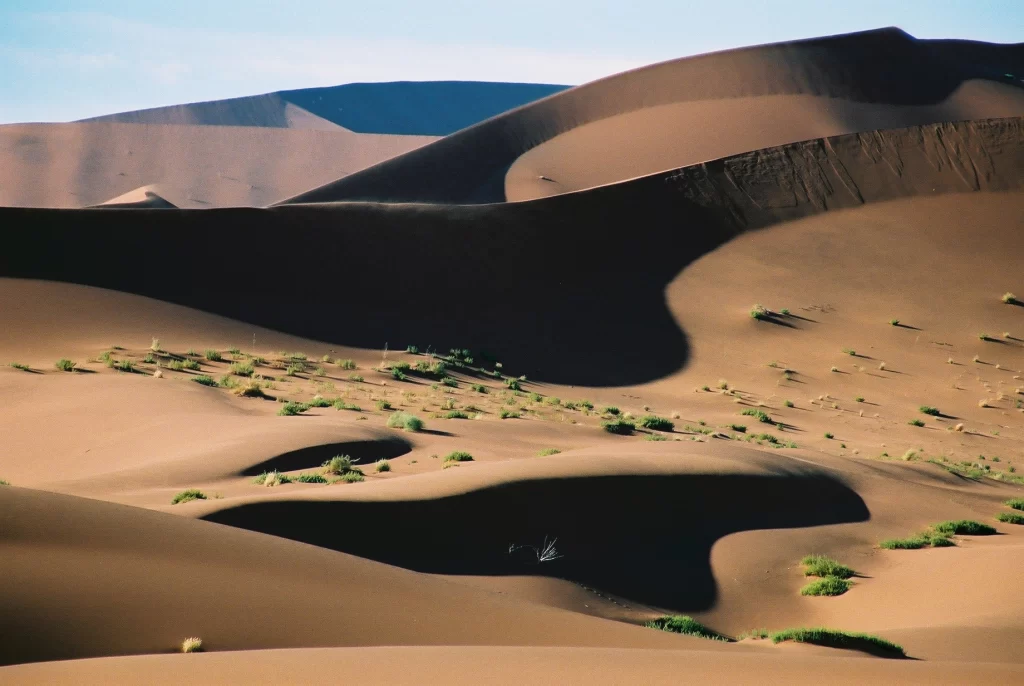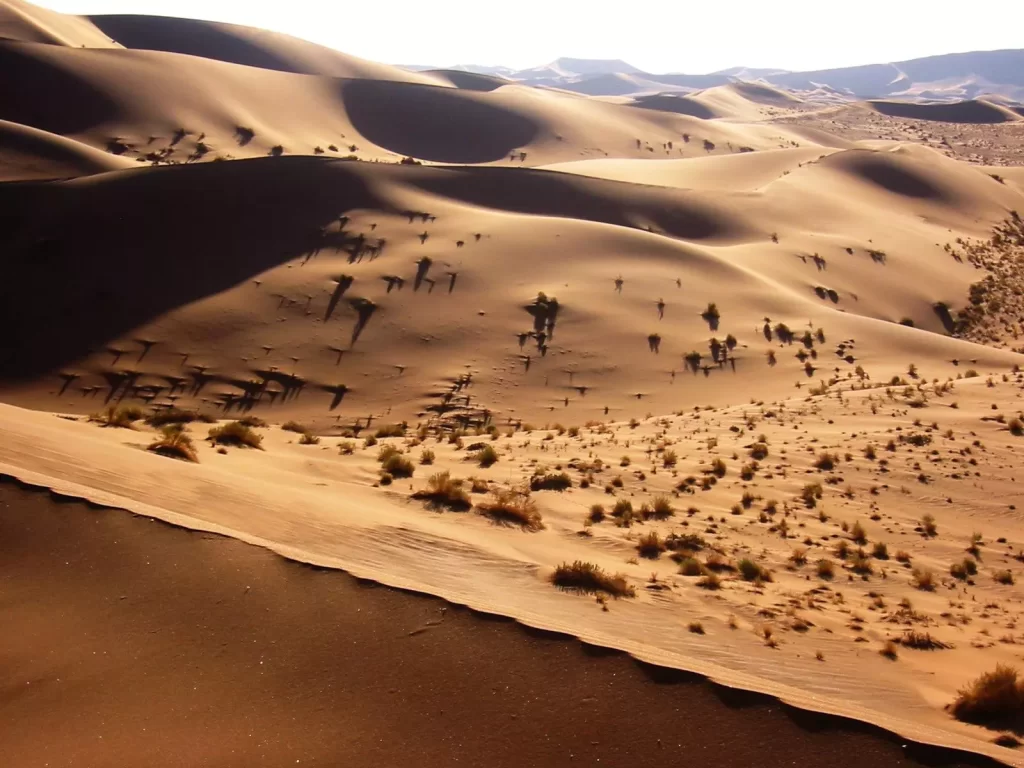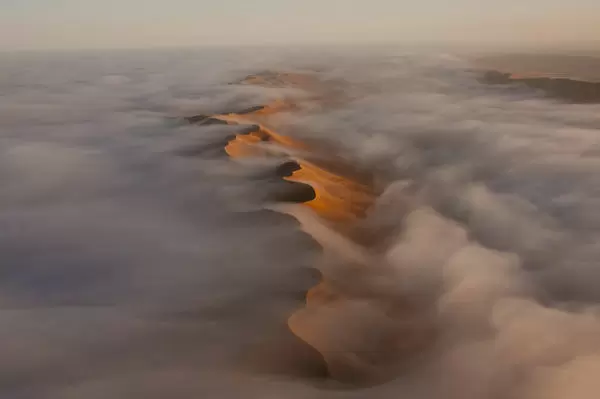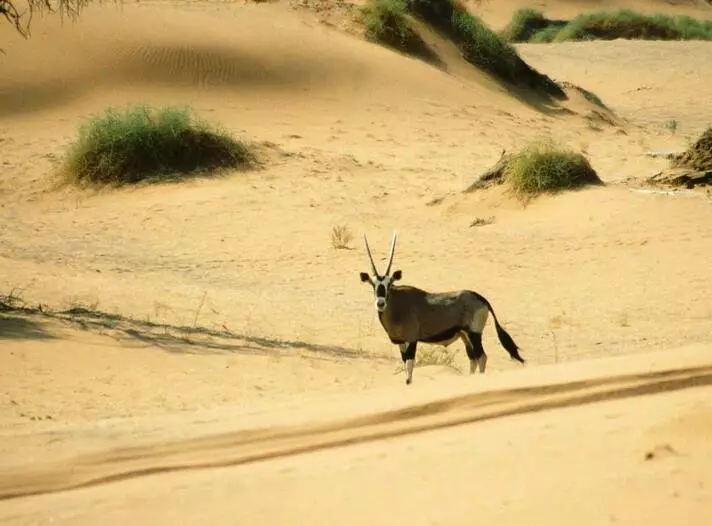A desert simply means a given area of land covered by barren soil and with a sparse distribution of vegetation cover. Namib desert is a desert stretching through the country of Namibia, in Africa, mainly between the Atlantic Ocean and the plateau. This is due to the different types of harsh climatic conditions experienced in these places. It is believed that the Namib desert is the world’s oldest desert and it is ranked the 6th largest in Africa covering a distance of about 82,000 square kilometers. This desert is not only located in Namibia but it also spreads to other countries such as Angola and South Africa, but the biggest proportion of the desert is mainly in Namibia.

Namib desert is a major tourist attraction in Africa and has many fascinating facts that make it known across many parts of the world. The population of humans inhabiting this desert is barely anything, but there is a significant number of wild animals that can be found here. There are different currents experienced in the Namib desert such as the Benguela currents and the desert winds which contribute to the formation of dunes.
The highest dunes are found in the Namib desert with over 250 meters of height. The kind of climate experienced in this desert is an arid type of climate and this is also due to the types of currents that pass across this place. The type of vegetation covered in this place, that is plant species, is unusual and they are rarely found in any other parts of the Namib desert.
Interesting Facts About The Namib Desert
1. It Is The Oldest Known Desert That Still Exists Today
Many different types of theories explain the reason for the emergence of the Namib desert and its arid conditions. The main reason that contributed to the aridity of this region is because of the dry type of currents that move throughout this region. The origin of the Namib desert can be dated more than 55 million years ago, a record that no other desert has kept.
The Namib desert is the oldest known desert as compared to any other desert ever in existence. Namib desert is considered an isolated region between the Atlantic Ocean and an escarpment, containing many different types of flora and fauna. For a very long time, this desert has been a major tourist attraction and many are encouraged to visit this place and experience different desert features that are fascinating to experience.
2. The Desert Is Almost Completely Uninhabited By Humans

Just as is in the case of all deserts, the population of humans found in such places is sparsely distributed and very rare to find. The reason behind little human settlement in desert regions is because of the harsh climatic conditions experienced herein, which might not be conducive to human survival. Some of these harsh conditions include scarcity of water, and food, and extremely high temperatures among many others.
The Namib desert has very few signs of human settlement. In this case, it is almost completely not inhabited by humans. There exist various groups of people living in the Namib desert despite the harsh conditions, though the number keeps on falling from one day to the other due to modernization. The groups found in the desert include the Himba and the Herero which are closely related.
3. Warm Air Mixing With Cold Air From The Ocean Causes Mist To Form

The aridity experienced in the Namib desert is mainly due to the currents that move across this place. A combination of these currents and forces that move across the desert causes mist to be formed, with warm air mixing with the cold air in the surrounding. Due to the high temperatures that are in the Namib desert, the place is at most times saturated and therefore the prevailing currents are necessary to cool the air.
The main currents in the Namib desert are the oceanic Benguela currents that emerge from the ocean that neighbors the desert, which is the Atlantic ocean. The area is cool mostly in the early morning areas and during the night.
4. Diamond Once Took Place In A Town That Has Since Been Claimed By Sand Dunes
A detailed history exists of the ancient Diamond town of Namibia. This was one of the most known towns that ever existed in the ancient history of Namibia that was highly claimed by dunes, which happened a long time ago. These dunes covered every single house and the whole town that was once a heritage for many people.
Namib desert to date is considered to be the desert with the tallest height of dunes. A dune is simply a collection of a lump of sandy soil that is found mainly in the desert regions or in the beeches where there is a big collection of sandy soils. Evidence has been left in the Namib desert that there existed human settlement in the olden days.
5. There Are Some Animals That Have Managed To Thrive In The Desert

Despite the desert conditions that are experienced in the Namib desert several kinds of animal species are found herein. Over time these animals have been able to adapt to the prevailing environmental conditions to ensure their survival in such a place.
The animals that can be found in the Namib desert include wild dogs, rhinos, dik-dik, elephants Cheetahs, Leopards, Zebras, and reptiles, just to mention a few. There are over 150 species of animals that can be found in the Namib desert and hence this proves that the population of animals is fairly high.
6. Skeleton Coast Has Many Shipwrecks That Disappear Due To The Sand Dunes

The Skeleton Coast is a region that is found in the Northern parts of the Namib desert bordering the Atlantic ocean. This name came as a result of the early visitors, mostly the Portuguese, that were once found in these regions. Namib desert was once covered in a sea mass but eventually, the place dried over leaving it a bare desert with little settlement.
There are more than 400 remaining signs of shipwrecks that can be found in the Namib desert. These shipwrecks came after some sailors were moving across the ocean near the desert, some moving to search for a sea route while others were in search of food. Some of these ships ended up getting stuck in the region and they can still be traced though over time some have been covered by the dunes.
